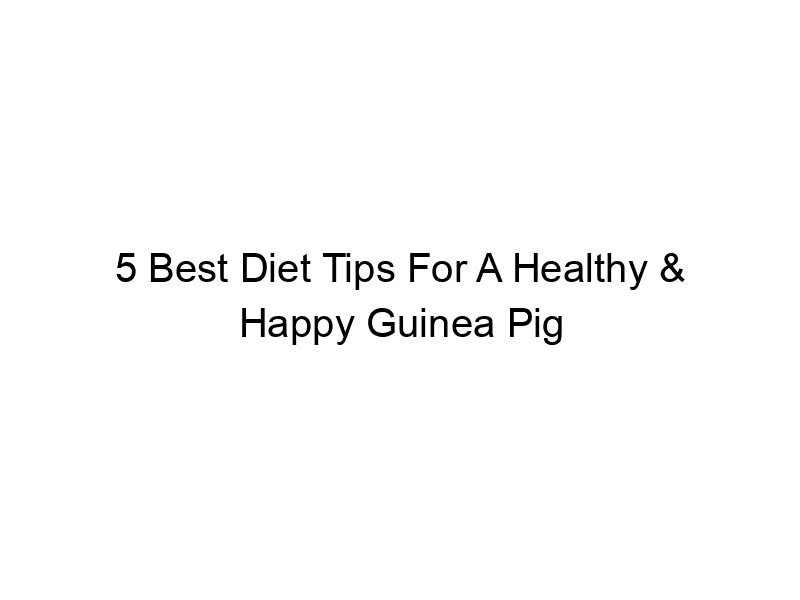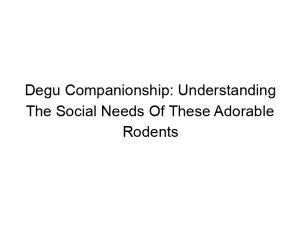Guinea pigs, with their adorable personalities and charming quirks, make wonderful companions. However, their well-being depends heavily on a proper diet. This comprehensive guide outlines 5 Best Diet Tips to Keep Your Guinea Pig Healthy and Happy, helping you provide optimal nutrition and ensure a long, fulfilling life for your furry friend. You’ll learn about essential nutrients, appropriate food choices, potential dangers of improper feeding, and how to create a balanced diet plan. Let’s get started!
Guinea pigs are unique among common pets because they cannot produce their own Vitamin C. This essential nutrient is crucial for immune function, growth, and preventing scurvy. A deficiency can lead to serious health problems. Other vital nutrients include Vitamin A, which supports vision and reproduction, and various B
vitamins for energy production. Dietary fiber is also crucial for healthy digestion and preventing gastrointestinal issues.
The Importance of Hay in a Guinea Pig’s Diet
Timothy Hay: The Cornerstone of a Healthy Diet
Unlimited access to high-quality Timothy hay should form the foundation of your guinea pig’s diet. Timothy hay is low in calcium and high in fiber, promoting healthy digestion and preventing dental problems. Other types of hay, like orchard grass and oat hay, can be offered in moderation as varied options, but Timothy hay remains paramount.
Hay’s Role in Preventing Dental Issues
Guinea pigs’ teeth continuously grow throughout their lives. Chewing on hay helps wear down their teeth, preventing overgrowth, which can lead to painful infections and difficulty eating. Insufficient hay intake is a common cause of dental problems in guinea pigs.
Pellets: A Supplement, Not a Staple
Choosing the Right Pellets
Guinea pig pellets should be high in fiber and low in sugar. Avoid pellets with added colors or artificial flavors. Look for pellets specifically formulated for guinea pigs, and always follow the recommended feeding guidelines on the packaging. Overfeeding pellets can lead to obesity and other health problems.
The Role of Pellets in a Balanced Diet
Pellets serve as a supplement to hay, providing additional vitamins and minerals. However, they should never replace hay as the primary food source. Think of pellets as a healthy snack, not the main meal.
Fresh Vegetables: Variety and Moderation
Suitable Vegetables and Safe Amounts
A variety of fresh vegetables can be offered to your guinea pig in moderation. Good choices include bell peppers (especially red and orange), carrots (in small quantities), cucumber, and romaine lettuce. Always introduce new vegetables gradually to avoid digestive upset. Avoid toxic vegetables such as spinach, iceberg lettuce, and rhubarb.
Avoiding Digestive Issues
Introduce new vegetables slowly, starting with a small amount and observing your guinea pig for any signs of digestive upset, such as diarrhea or bloating. If any negative reactions occur, discontinue the vegetable.
Fruits: Occasional Treats, Not Daily Fare
Suitable Fruits and Portion Sizes
Fruits should be offered only as occasional treats, due to their high sugar content. Small amounts of berries (strawberries, blueberries), melon (watermelon, cantaloupe), or banana can be given as a special treat a couple of times a week. Always remove uneaten fruit to prevent spoilage and bacterial growth.
The Sugar Content of Fruits
High sugar intake can contribute to obesity, dental problems, and other health issues. Moderation is key when it comes to offering fruit to your guinea pig.
Water: Always Available and Fresh
Importance of Clean, Fresh Water
Clean, fresh water should always be available to your guinea pig. Use a heavy, stable water bottle or a ceramic bowl that cannot be easily tipped over. Change the water daily to prevent bacterial growth. Dehydration can be a serious health concern.
Recognizing Signs of Dehydration
Signs of dehydration include lethargy, sunken eyes, and dry skin. If you suspect your guinea pig is dehydrated, contact your veterinarian immediately. Always ensure ample water intake alongside the correct diet.
Avoiding Harmful Foods for Guinea Pigs
Toxic Foods to Avoid
Avoid giving your guinea pig foods that are toxic to them, such as chocolate, avocado, onions, garlic, and rhubarb. These foods can cause serious illness or even death. It is important to check any food before giving it to ensure its safety.
Common Household Dangers
Many household items can be harmful to guinea pigs, so keep them away from cleaners, pesticides, and other potentially toxic substances. Also, ensure your pet is not able to chew through electrical wires.
Creating a Balanced Diet Chart
Sample Weekly Diet Plan
A balanced diet for a guinea pig should consist primarily of Timothy hay, supplemented with a small amount of guinea pig pellets, a variety of fresh vegetables, and occasional fruit treats. Here’s an example of a weekly diet plan:
- Timothy hay: Unlimited
- Pellets: 1/4 cup per day
- Vegetables: 1/2 cup per day (variety is key)
- Fruits: Small amount (1-2 tablespoons) 1-2 times per week
Signs of Nutritional Deficiency
Recognizing the Symptoms
Signs of nutritional deficiencies in guinea pigs can include lethargy, weight loss, dull coat, poor appetite, dental problems, and frequent illnesses. If you notice any of these symptoms, contact your veterinarian immediately. Early intervention is crucial.
Prevention Through Balanced Nutrition
Proper nutrition is the best way to prevent nutritional deficiencies. Providing a diet rich in hay, fresh vegetables, and appropriate pellets, alongside clean water, significantly lowers the risk of nutritional deficiencies.
Supplementing Your Guinea Pig’s Diet
When and Why to Supplement
Sometimes, despite careful feeding, your guinea pig may require supplements. This might be recommended by your veterinarian due to specific health conditions or during periods of stress or illness. Supplements might include additional Vitamin C or other specific nutrients.
Consulting with a Veterinarian
Never start supplementing your guinea pig’s diet without consulting your veterinarian first. Improper supplementation can be just as harmful as a deficient diet. Always get professional advice.
Choosing High-Quality Guinea Pig Food
Key Factors to Consider
When selecting guinea pig food, look for high-quality pellets made with natural ingredients, low in sugar, and formulated specifically for guinea pigs. Read the ingredient list carefully, and opt for brands with a reputation for quality.
Reading Food Labels
Pay attention to the ingredients listed on the packaging. The higher the fiber content and the lower the sugar content, the better. Avoid brands with excessive amounts of fillers or artificial additives.
The Importance of Fresh Water
Water Bottle vs. Bowl
Both water bottles and bowls have their pros and cons. Water bottles can help prevent contamination and maintain freshness longer. However, some guinea pigs struggle to drink from them. Bowls are easier for the animals to access but might become dirty faster.
Maintaining Water Hygiene
Regardless of your choice, always maintain cleanliness. Clean the bottle or bowl daily and replace the water completely. Ensure there is no mold or bacteria build-up.
Maintaining a Healthy Weight
Signs of Obesity in Guinea Pigs
Obesity in guinea pigs can lead to a number of health problems, including diabetes, heart disease, and joint problems. Signs of obesity include a noticeable increase in body fat, difficulty moving, and shortness of breath.
Weight Management Strategies
If your guinea pig is overweight, consult your veterinarian to develop a weight-management plan. This might involve reducing the amount of pellets or fruits given, increasing exercise, and monitoring food intake.
Frequently Asked Questions
What happens if my guinea pig doesn’t get enough Vitamin C?
Vitamin C deficiency can lead to scurvy, a serious and painful condition that weakens the immune system, causes joint pain, bleeding gums, and poor wound healing. Without sufficient Vitamin C, your guinea pig will be more susceptible to infections and illness.
Can I feed my guinea pig human food scraps?
Some human foods are safe for guinea pigs in small amounts, but many are toxic. It’s best to stick to the recommended diet of hay, pellets, fresh vegetables, and occasional fruits. Always check a reliable source to make sure the food is safe.
How often should I change my guinea pig’s hay?
Hay should always be available to your guinea pig. Replace soiled hay regularly. Always supply a good amount of fresh hay every day to ensure constant access.
My guinea pig is picky eater. What should I do?
Guinea pigs can be picky. If your guinea pig refuses to eat certain foods, try introducing new options gradually, mixing them with their favorite foods, or consulting your veterinarian to rule out underlying medical issues impacting their appetite.
How much hay should my guinea pig eat?
Ideally, a guinea pig should have unlimited access to hay. Aim for the guinea pig to have more hay than pellets. The majority of their food should be hay.
What are the signs of a healthy guinea pig?
A healthy guinea pig is active, alert, has shiny fur, and eats well. Their droppings should be firm and well-formed. If you notice any changes in your guinea pig’s behavior or appearance, consult your veterinarian.
Final Thoughts
Providing your guinea pig with a proper diet is crucial for their overall health and happiness. Remember that hay is the cornerstone, pellets are a supplement, vegetables offer variety, and fruits are occasional treats. By diligently following these five essential tips and monitoring your guinea pig’s health, you can ensure a long and fulfilling life for your adorable furry companion. Always consult your veterinarian with any dietary concerns or if you notice any changes in your guinea pig’s health. Remember, a happy, well-fed guinea pig is a healthy guinea pig!




